Search
Search Results
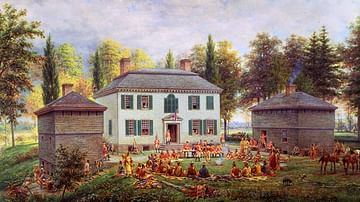
Image
Sir William Johnson Presenting Medals to Chiefs of the Six Nations at Johnstown, N.Y., 1772
A depiction of Sir William Johnson holding a conference with the Iroquois at his home of Johnson Hall in 1772, painting by Edward Lawson Henry, 1903.
Canadian Museum of History, Gatineau.
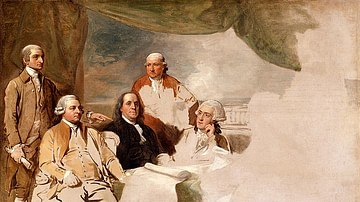
Definition
Treaty of Paris of 1783
The Treaty of Paris, signed on 3 September 1783 by representatives from Great Britain and the United States, was the peace agreement that formally ended the American Revolutionary War (1775-1783) and recognized the United States as an independent...

Definition
Jay Treaty
The Jay Treaty, formally known as the Treaty of Amity, Commerce, and Navigation, Between His Britannic Majesty and the United States of America, was a controversial treaty signed by representatives of the United States and Great Britain in...
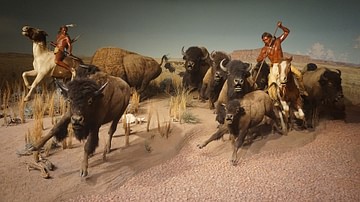
Article
Buffalo and the Plains Indians
The buffalo were essential to the Plains Indians, and other Native American nations, as they were not only a vital food source but were regarded as a sacred gift the Creator had provided especially for the people. Buffalo (bison) supplied...
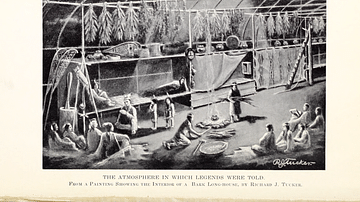
Article
De-Ka-Nah-Wi-Da and Hiawatha
De-Ka-Nah-Wi-Da and Hiawatha is the written account of the oral history of the origins of the Haudenosaunee (Iroquois) Confederacy, detailing how the great peacemaker Dekanawida (De-Ka-Nah-Wi-Da) met Chief Hiawatha and established peace between...
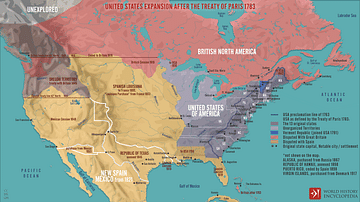
Image
United States Expansion after the Treaty of Paris in 1783
A map illustrating the expansion of the United States of America following the Treaty of Paris (September 3, 1783), which ended the War of the American Revolution, recognized U.S. independence, and granted it sizeable additional territory...
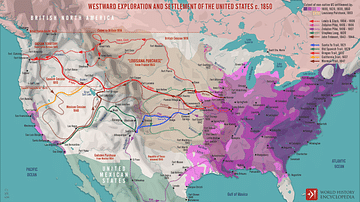
Image
Westward Exploration and Settlement of the United States c.1850
A map illustrating the patterns and routes of westward exploration and settlement in the United States after the “Louisiana Purchase” from France in 1803. As Napoleonic dreams of a great North American Empire gave way to French hegemonic...

Image
Map of the United States on the Eve of Civil War, 1861 - Free States, Slave States, and the Fracturing of the Union
This map illustrates the political landscape of the United States in 1861, just as the nation stood on the brink of civil war. It highlights the division between free and slave states, the status of U.S. territories, and the emerging Confederacy...

Image
The Declaration of Independence of the United States of America
The Declaration of Independence of the United States of America, July 4, 1776, oil on canvas by Charles Édouard Armand-Dumaresq, c. 1873.
White House Cabinet Room, Washington, D.C.
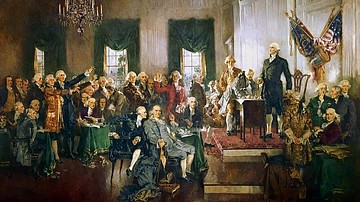
Image
Scene at the Signing of the Constitution of the United States
A scene at the signing of the US Constitution, oil on canvas painting by Howard Chandler Christy, 1940.
United States Capitol, Washington, D.C.